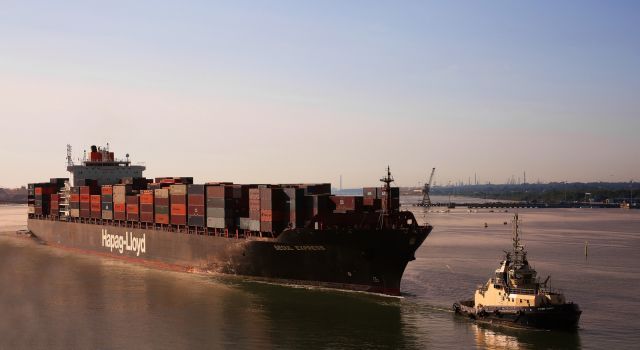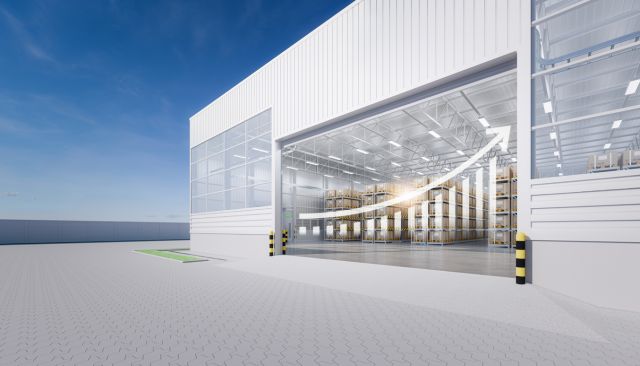The Trans-Pacific Partnership (TTP) is a sweeping new trade agreement signed by 12 countries—the U.S., Japan, Canada, Mexico, Australia, New Zealand, Vietnam, Malaysia, Peru, Chile, Brunei and Singapore— in Auckland, New Zealand, on February 4, 2016, completing a seven-year process. The TPP will lower tariffs and set commercial rules of the road for 40 per cent of the world economy, or approximately $28.6 trillion in combined GDP.
For NAFTA-governed Canada, the TPP will re-write existing trade laws and have major repercussions for supply chain management systems. Here is a snapshot of how the TPP will affect Canada’s top three industries—manufacturing, mining and agriculture and agri-food products.
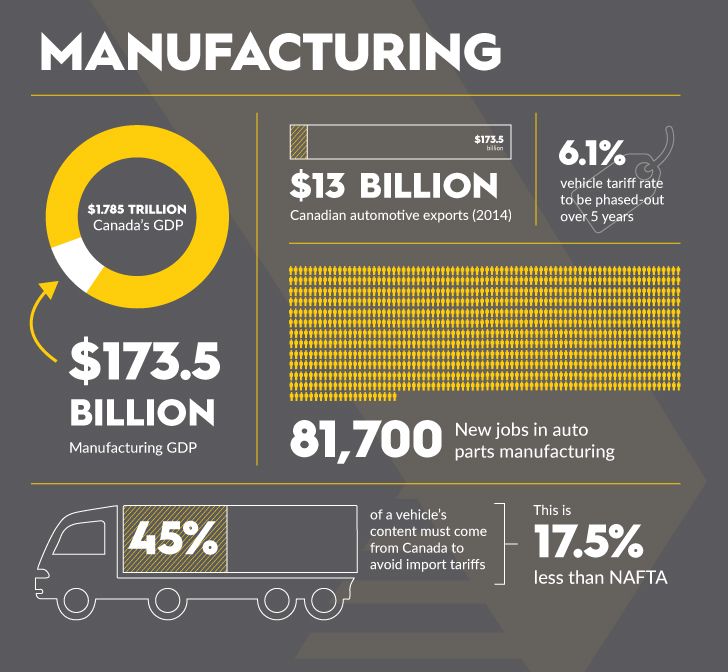
The elimination of tariffs and a reduction in Canadian-manufactured parts will result in business lost to low-cost Asian manufacturers and a further contraction of Canada’s export surplus of automotive products.
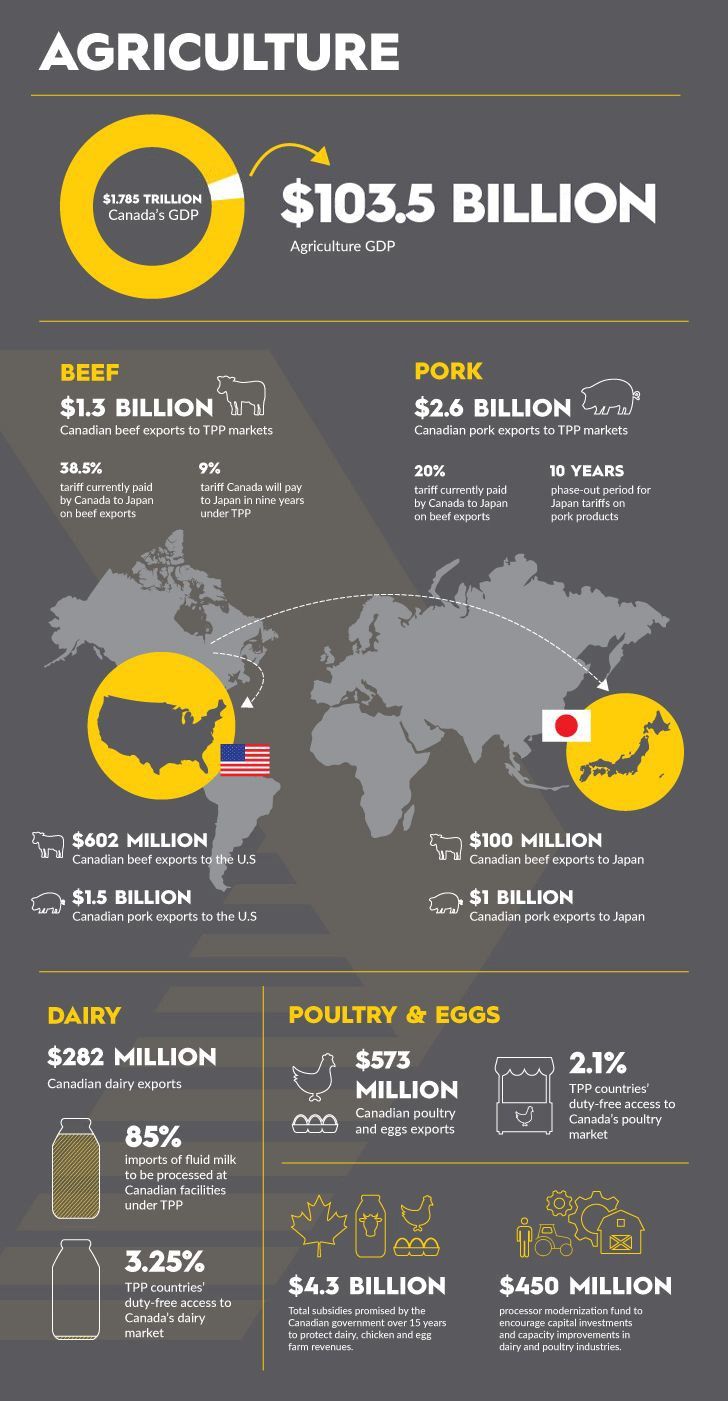
Tariff reductions will mean new emerging market opportunites for the pork and beef industry. But an increase in duty-free access to dairy and poultry from TPP countries will result in more competition for Canadian producers, which will necessitate government subsidies to protect domestic industries.
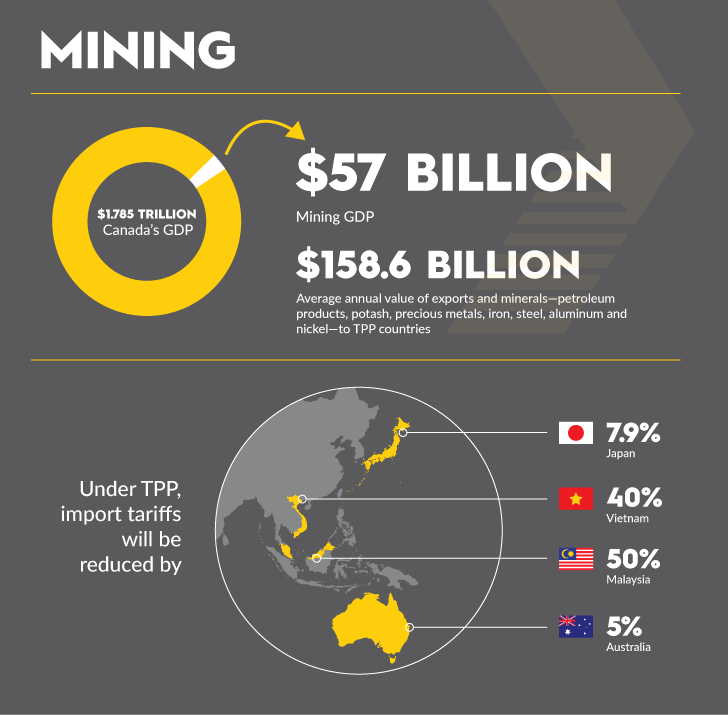
Overall, the reduction and equalization of mineral tariff rates among TPP countries will provide greater access to Canadian metals and mineral producers.
The TPP will mean a significant shift for many key Canadian industries, as tariff barriers in the Pacific Rim region are eliminated and competition from TPP countries increases along with their access to Canada’s markets. There’ll no doubt be increased demand on 3PLs to continue providing cost-effective and efficient solutions to these shifting supply chain operations.
